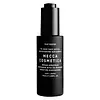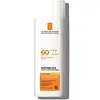What's inside
What's inside
 Key Ingredients
Key Ingredients

 Benefits
Benefits

 Concerns
Concerns

 Ingredients Side-by-side
Ingredients Side-by-side

Bis-Ethylhexyloxyphenol Methoxyphenyl Triazine
Skin ConditioningButyl Methoxydibenzoylmethane
UV AbsorberEthylhexyl Triazone
UV AbsorberHomosalate
Skin ConditioningMethylene Bis-Benzotriazolyl Tetramethylbutylphenol
UV FilterOctocrylene
UV Absorber1,2-Hexanediol
Skin ConditioningButylene Glycol
HumectantAcrylates Copolymer
C12-15 Alkyl Benzoate
AntimicrobialCaprylyl Glycol
EmollientCaramel
Cosmetic ColorantCitric Acid
BufferingDecyl Glucoside
CleansingDecylene Glycol
Skin ConditioningDibutyl Adipate
EmollientDisodium EDTA
Tocopheryl Acetate
AntioxidantParfum
MaskingGlyceryl Hydroxystearate
EmollientDipotassium Glycyrrhizate
HumectantMica
Cosmetic ColorantNiacinamide
SmoothingPhenoxyethanol
PreservativePolyglyceryl-3 Methylglucose Distearate
EmulsifyingPonceau Sx
Potassium Cetyl Phosphate
EmulsifyingPropylene Glycol
HumectantWater
Skin ConditioningSaccharide Isomerate
HumectantSodium Citrate
BufferingCI 15985
Cosmetic ColorantTitanium Dioxide
Cosmetic ColorantTriethanolamine
BufferingXanthan Gum
EmulsifyingBis-Ethylhexyloxyphenol Methoxyphenyl Triazine, Butyl Methoxydibenzoylmethane, Ethylhexyl Triazone, Homosalate, Methylene Bis-Benzotriazolyl Tetramethylbutylphenol, Octocrylene, 1,2-Hexanediol, Butylene Glycol, Acrylates Copolymer, C12-15 Alkyl Benzoate, Caprylyl Glycol, Caramel, Citric Acid, Decyl Glucoside, Decylene Glycol, Dibutyl Adipate, Disodium EDTA, Tocopheryl Acetate, Parfum, Glyceryl Hydroxystearate, Dipotassium Glycyrrhizate, Mica, Niacinamide, Phenoxyethanol, Polyglyceryl-3 Methylglucose Distearate, Ponceau Sx, Potassium Cetyl Phosphate, Propylene Glycol, Water, Saccharide Isomerate, Sodium Citrate, CI 15985, Titanium Dioxide, Triethanolamine, Xanthan Gum
Butyl Methoxydibenzoylmethane 3%
UV AbsorberHomosalate 10%
Skin ConditioningEthylhexyl Salicylate 5%
UV AbsorberOctocrylene 7%
UV AbsorberWater
Skin ConditioningCyclopentasiloxane
EmollientAlcohol Denat.
AntimicrobialSilica
AbrasiveDicaprylyl Ether
EmollientStyrene/Acrylates Copolymer
PEG-30 Dipolyhydroxystearate
EmulsifyingDimethicone
EmollientCyclohexasiloxane
EmollientPolymethylsilsesquioxane
Nylon-12
Dicaprylyl Carbonate
EmollientDiethylhexyl Syringylidenemalonate
Skin ProtectingPhenoxyethanol
PreservativeLauryl PEG/PPG-18/18 Methicone
Skin ConditioningSodium Chloride
MaskingCaprylyl Glycol
EmollientPEG-8 Laurate
EmulsifyingIsostearyl Alcohol
EmollientPoly C10-30 Alkyl Acrylate
Emulsion StabilisingDisteardimonium Hectorite
StabilisingP-Anisic Acid
MaskingCaprylic/Capric Triglyceride
MaskingDisodium EDTA
Cassia Alata Leaf Extract
AstringentPropylene Carbonate
SolventSodium Dodecylbenzenesulfonate
CleansingTocopherol
AntioxidantButyl Methoxydibenzoylmethane 3%, Homosalate 10%, Ethylhexyl Salicylate 5%, Octocrylene 7%, Water, Cyclopentasiloxane, Alcohol Denat., Silica, Dicaprylyl Ether, Styrene/Acrylates Copolymer, PEG-30 Dipolyhydroxystearate, Dimethicone, Cyclohexasiloxane, Polymethylsilsesquioxane, Nylon-12, Dicaprylyl Carbonate, Diethylhexyl Syringylidenemalonate, Phenoxyethanol, Lauryl PEG/PPG-18/18 Methicone, Sodium Chloride, Caprylyl Glycol, PEG-8 Laurate, Isostearyl Alcohol, Poly C10-30 Alkyl Acrylate, Disteardimonium Hectorite, P-Anisic Acid, Caprylic/Capric Triglyceride, Disodium EDTA, Cassia Alata Leaf Extract, Propylene Carbonate, Sodium Dodecylbenzenesulfonate, Tocopherol
 Reviews
Reviews

Ingredients Explained
These ingredients are found in both products.
Ingredients higher up in an ingredient list are typically present in a larger amount.
Also known as Avobenzone, this ingredient is a chemical sunscreen filter that provides protection in the UV-A range.
Avobenzone is globally approved and is the most commonly used UV-A filter in the world.
Studies have found that avobenzone becomes ineffective when exposed to UV light (it is not photostable; meaning that it breaks down in sunlight). Because of this, formulations that include avobenzone will usually contain stabilizers such as octocrylene.
However, some modern formulations (looking at you, EU!) are able to stabilize avobenzone by coating the molecules.
Avobenzone does not protect against the UV-B range, so it's important to check that the sunscreen you're using contains other UV filters that do!
The highest concentration of avobenzone permitted is 3% in the US, and 5% in the EU.
Learn more about Butyl MethoxydibenzoylmethaneCaprylyl Glycol is a humectant and emollient, meaning it attracts and preserves moisture.
It is a common ingredient in many products, especially those designed to hydrate skin. The primary benefits are retaining moisture, skin softening, and promoting a healthy skin barrier.
Though Caprylyl Glycol is an alcohol derived from fatty acids, it is not the kind that can dry out skin.
This ingredient is also used as a preservative to extend the life of products. It has slight antimicrobial properties.
Learn more about Caprylyl GlycolDisodium EDTA plays a role in making products more stable by aiding other preservatives.
It is a chelating agent, meaning it neutralizes metal ions that may be found in a product.
Disodium EDTA is a salt of edetic acid and is found to be safe in cosmetic ingredients.
Learn more about Disodium EDTAHomosalate is a chemical sunscreen filter that provides protection in the UV-B range (280nm - 320 nm), with a peak protection at 306 nm. It is internationally approved for use in sunscreens.
Homosalate is not photo-stable, meaning it's strength as a UV filter degrades over time with exposure to the sun. Because of this, it's often used in combination with other chemical sunscreen filters as avobenzone (which protects from the UV-A range). Homosalate also helps act as a solvent for harder-to-dissolve UV filters.
(Part of the reason that sunscreens need to be frequently re-applied is due to the photo instability of many chemical sunscreen filters)
Currently, homosalate is approved in concentrations up to 10% in the EU and 15% in the US. The FDA is currently doing further research on the effects of homosalate, and it is possible that these approved concentrations will change in the future.
Learn more about HomosalateOctocrylene protects skin from sun damage. It absorbs UV-B with peak absorption of 304 nm. It is a common sunscreen ingredient and often paired with avobenzone, a UVA filter. This is because octocrylene stabilizes other sunscreen ingredients by protecting them from degradation when exposed to sunlight. Octocrylene is a photostable ingredient and loses about 10% of SPF in 95 minutes.
Octocrylene also acts as an emollient, meaning it helps skin retain moisture and softens skin. It is oil-soluble and hydrophobic, enhancing water-resistant properties in a product.
Those who are using ketoprofen, a topical anti-inflammatory drug, may experience an allergic reaction when using octocrylene. It is best to speak with a healthcare professional about using sunscreens with octocrylene.
The EU allows a maximum of these concentrations:
Learn more about OctocrylenePhenoxyethanol is a preservative that has germicide, antimicrobial, and aromatic properties. Studies show that phenoxyethanol can prevent microbial growth. By itself, it has a scent that is similar to that of a rose.
It's often used in formulations along with Caprylyl Glycol to preserve the shelf life of products.
Water. It's the most common cosmetic ingredient of all. You'll usually see it at the top of ingredient lists, meaning that it makes up the largest part of the product.
So why is it so popular? Water most often acts as a solvent - this means that it helps dissolve other ingredients into the formulation.
You'll also recognize water as that liquid we all need to stay alive. If you see this, drink a glass of water. Stay hydrated!
Learn more about Water